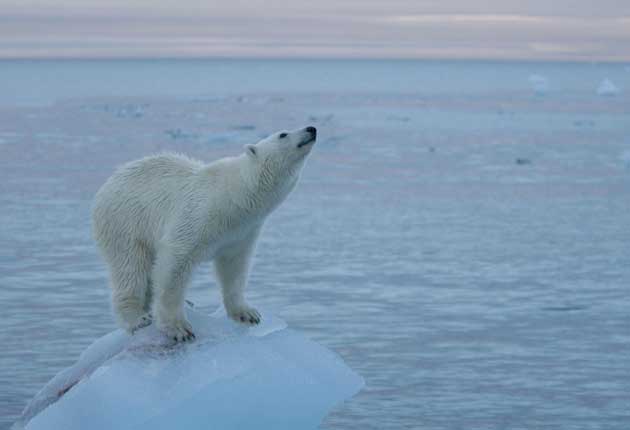The incredible shrinking polar bear
Animals lose weight and size as melting ice limits hunting

Your support helps us to tell the story
From reproductive rights to climate change to Big Tech, The Independent is on the ground when the story is developing. Whether it's investigating the financials of Elon Musk's pro-Trump PAC or producing our latest documentary, 'The A Word', which shines a light on the American women fighting for reproductive rights, we know how important it is to parse out the facts from the messaging.
At such a critical moment in US history, we need reporters on the ground. Your donation allows us to keep sending journalists to speak to both sides of the story.
The Independent is trusted by Americans across the entire political spectrum. And unlike many other quality news outlets, we choose not to lock Americans out of our reporting and analysis with paywalls. We believe quality journalism should be available to everyone, paid for by those who can afford it.
Your support makes all the difference.Polar bears are shrinking, along with the ice on which they live – and are turning to cannibalism – as global warming increasingly stops them getting enough to eat.
Scientists say the animals are now only two-thirds as big as they were 30 years ago as melting ice makes it harder for them to catch seals, and that they have begun to hunt each other instead.
The news comes as Arctic nations agreed at a special summit in Norway last week to draw up an action plan to try to save the highly endangered species.
The bears subsist almost entirely on seals, and depend on the polar ice to hunt them. As the seals swim too fast in open water, the bears have to lie in wait for them to surface for air through holes and cracks in the ice. But the best place to do this is near land, as the seals congregate in shallow waters, and every year the ice is receding further out to sea as global warming takes hold.
Even worse, the ice is melting earlier each year – cutting down the amount of seals the bears can catch in the spring, which the bears use as a vital fattening-up time to see them through a long summer fast.
New research presented at last week's summit – the most important meeting on the fate of the polar bear for more than three decades – shows that female bears now weigh an average of 230kg, a full 65kg less than in 1980, and are 220cm long, 35cm less than before.
Their health has suffered as their weight has fallen, impairing their ability to reproduce and have cubs that survive. "The chain of events starts with a drop in body condition that subsequently leads to a drop in reproduction, which leads to a drop in survival," Dr Andrew Derocher, chair of the international Polar Bear Specialist Group, told delegates.
Other scientists report that, in their desperation, the bears are turning on each other. Dr Steven Amstrup, a specialist on the animals at the US Geological Survey, says they are "clearly deliberately hunting other bears, for example by attacking females in their denning areas".
Two years ago a giant US government study predicted that global warming would kill off two-thirds of the world's polar bears by 2050. But this is now thought to be over-optimistic: the melting is accelerating so fast that many scientists believe the Arctic Ocean will be completely ice-free in summer by 2030.
Join our commenting forum
Join thought-provoking conversations, follow other Independent readers and see their replies
Comments